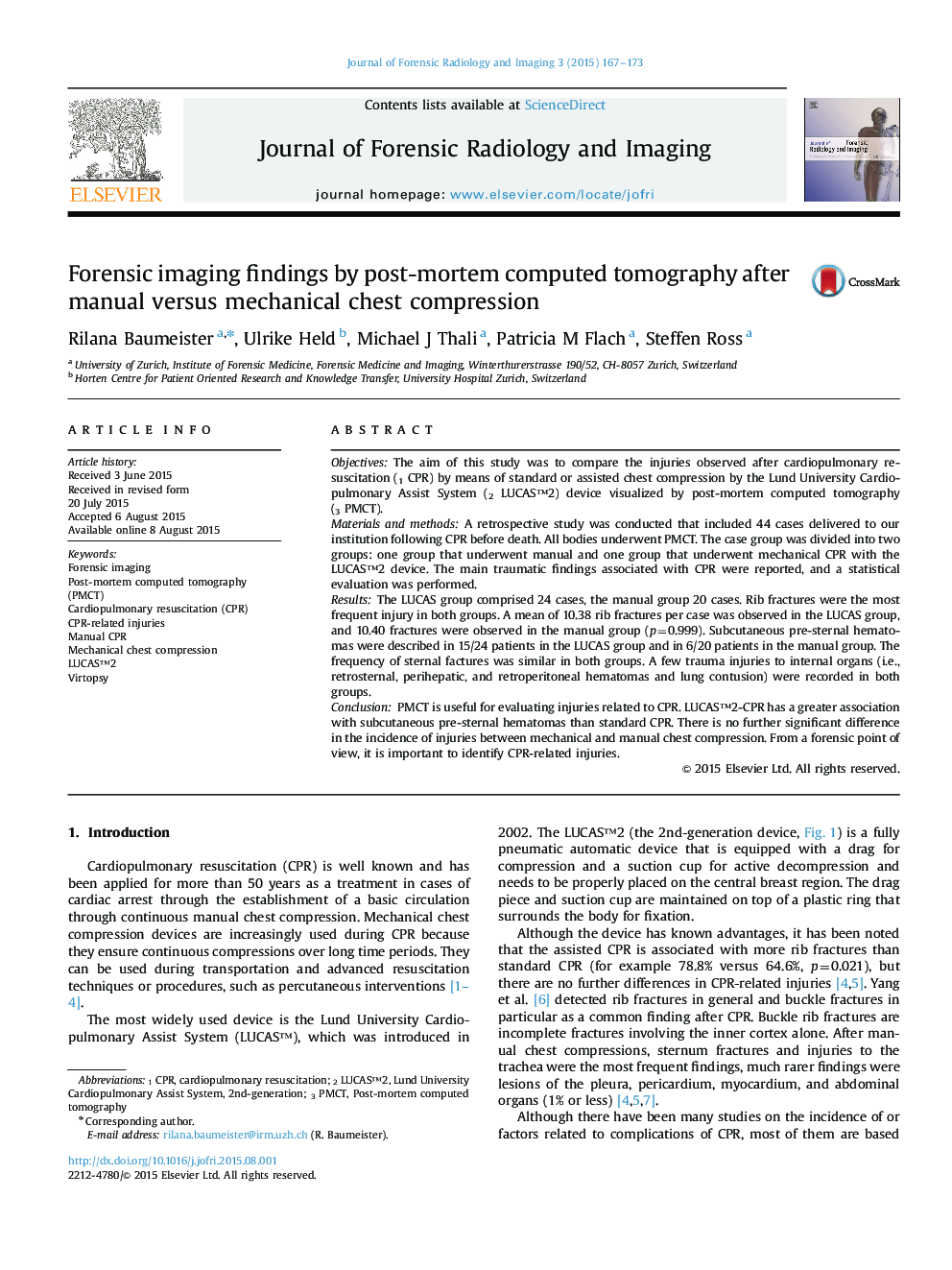| کد مقاله | کد نشریه | سال انتشار | مقاله انگلیسی | نسخه تمام متن |
|---|---|---|---|---|
| 103216 | 161367 | 2015 | 7 صفحه PDF | دانلود رایگان |
• PMCT is useful for evaluating complications related to CPR.
• LUCAS™2-CPR is associated with subcutaneous pre-sternal hematoma.
• From a forensic point of view, it is important to identify CPR-related injuries.
• PMCT is increasingly performed as an alternative/adjunct to formal autopsy.
ObjectivesThe aim of this study was to compare the injuries observed after cardiopulmonary resuscitation (1 CPR) by means of standard or assisted chest compression by the Lund University Cardiopulmonary Assist System (2 LUCAS™2) device visualized by post-mortem computed tomography (3 PMCT).Materials and methodsA retrospective study was conducted that included 44 cases delivered to our institution following CPR before death. All bodies underwent PMCT. The case group was divided into two groups: one group that underwent manual and one group that underwent mechanical CPR with the LUCAS™2 device. The main traumatic findings associated with CPR were reported, and a statistical evaluation was performed.ResultsThe LUCAS group comprised 24 cases, the manual group 20 cases. Rib fractures were the most frequent injury in both groups. A mean of 10.38 rib fractures per case was observed in the LUCAS group, and 10.40 fractures were observed in the manual group (p=0.999). Subcutaneous pre-sternal hematomas were described in 15/24 patients in the LUCAS group and in 6/20 patients in the manual group. The frequency of sternal factures was similar in both groups. A few trauma injuries to internal organs (i.e., retrosternal, perihepatic, and retroperitoneal hematomas and lung contusion) were recorded in both groups.ConclusionPMCT is useful for evaluating injuries related to CPR. LUCAS™2-CPR has a greater association with subcutaneous pre-sternal hematomas than standard CPR. There is no further significant difference in the incidence of injuries between mechanical and manual chest compression. From a forensic point of view, it is important to identify CPR-related injuries.
Journal: Journal of Forensic Radiology and Imaging - Volume 3, Issue 3, September 2015, Pages 167–173
